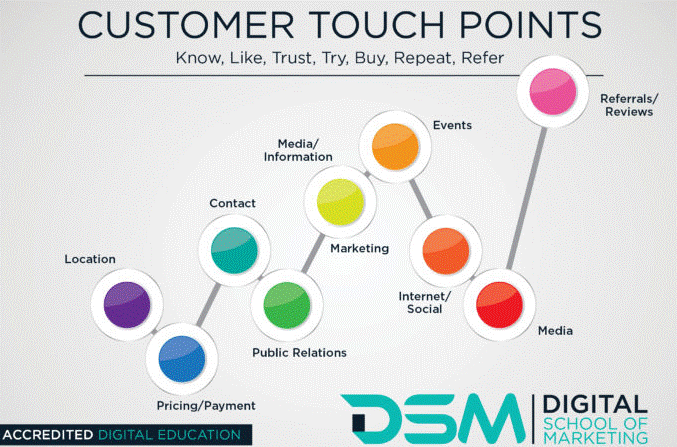How can customer success and experience managers use training to improve customer experience (CX)?
Within volatile industries in particular—where evolving technology and trends keep entire markets, companies, employees and customers “on their toes”—great customer experience breeds loyalty and distinguishes a brand from its competitors.
Unfortunately, organizations do a poor job of fostering a great customer experience.
In a survey that asked 802 IT decision-makers in high revenue organizations to rate their experience with tech vendors, the average customer experience rating was 52%, which sits at the lower range of the “poor” rating.
While the responsibility of customer experience rests on the entire organization as a whole, customer training and success teams are positioned to improve customer experience in their own unique ways.
Ahead, we’ll explore how customer training benefits your organization and how to tie it into your customer experience strategy.
(Jump to a specific section by clicking its title below)
- Why is improving customer experience so important?
- How Deloitte unites employee training & customer experience strategy
- 5 ways to improve the customer experience through training
- 1. Bolster brand positioning with your content
- 2. Launch a customer community by teaching users
- 3. Empower employees with the right resources
- 4. Continuously educate your customers
- 5. Cherish your “super-users” and champions
Why is improving customer experience so important?
Customer experience is the sum of all the interactions that customers have with a brand while they remain active customers.

It includes how customers feel, how engaged they are, and how they perceive the brand and its actions throughout the relationship. This includes various stages such as:
- Discovery
- Initiation
- Purchase
- Service/support
- Advocacy
Every stage in the customer journey impacts customer loyalty, and how customers talk about your brand online as well as offline.
Improving customer experience can therefore have a significant impact on your organization’s bottom line. It reduces customer churn, lowers operational costs, improves customer loyalty and increases your profit per customer.
Recommended read: 5 powerful ways to improve corporate e-learning programs
How Deloitte unites employee training & customer experience strategy
Like many other organizations, Deloitte Accountancy, one of the four largest accounting organizations in the world, faced a wave of digitalization triggered by the COVID-19 pandemic.
To adapt, the firm had to ensure that its accountancy experts had the right interpersonal skills to nurture healthy, lasting relationships with their clients when relying on digital/in-person communications.
After surveying clients, Deloitte Accountancy identified 9 make-or-break stages in the accountant-client relationship. Clients expressed clear expectations towards Deloitte and their accountancy experts in each of these stages.

Empowered by these insights, Deloitte Accountancy’s training team used the Totara Learn LMS to create ClientFit, an award-winning, Netflix-themed episodic employee training program that coached its employees through the pivotal stages and key expectations in the customer lifecycle.
This focus on customer-centric soft skills training for employees paid off tremendously. The program:
- Reached an 87% completion rate for 500 employees
- Received 480 submissions from 4 assignments (based on two “episodes”)
- Directly improved Deloitte’s customer experience as consultants were able to precisely meet different customer expectations and needs throughout different stages.
As shown by Deloitte’s impressive case study, the benefits of using learning to enhance the customer experience reach far and wide and apply to both, customer and employee training.
Companies who invest in better employee and customer training as part of their customer experience strategy also enjoy:
Better customer onboarding
Considering that 63% of customers consider a company’s onboarding program when making a purchasing decision, the onboarding process is a defining stage that can make or break your ability to retain and engage your customers.
Fortunately, better training enhances the onboarding experience for customers. It reinforces a positive first impression of your brand, reduces friction throughout the entire customer experience and helps users quickly receive value from your products.
Positive customer touchpoints

Touchpoints range from small-large scale interactions between businesses and their customers. They cumulatively influence brand perception and an organization’s ability to show its unique positioning and messaging.
Through customer training, your organization raises the frequency of positive and valuable touchpoints that customers experience to improve brand perception and user satisfaction.
Increased customer engagement and retention
What’s the difference between passionate brand evangelists and satisfied customers?
Emotion.
In the book Human Sigma, author and Gallup’s Chief Scientist for Customer Engagement, John H. Fleming, Ph.D., stipulates that the key differentiator between brand loyalists and lukewarm customers is how emotionally engaged they were with a brand.
With customer expectations growing, having a good product or service alone doesn’t facilitate great loyalty and engagement. Alongside key product or service offerings, organizations need to deliver engaging experiences that boost retention.
Customer education, implemented in the right way, is an effective way to deliver these value-packed experiences that keep users aligned and engaged with your brand.
5 ideas to improve the customer experience through training
Now that we’ve covered the intrinsic connection between customer experience and learning, here are 5 ways to use customer training to improve the overall customer experience:
1. Bolster brand positioning with your content
Positioning is how you want to be perceived by your customers and is inextricably linked to customer experience. It often stems from your USP, your product and your core values—factors that are sometimes outside of your locus of control.
While you might not have full reign over your positioning, messaging or tone, customer training allows you to bolster these USPs through your content, training style and approach to customer support.
Here at Totara, for example, we value community, knowledge-sharing and learning. That’s why the Totara Community doesn’t just stop at an academy with product-related courses.
It also offers workspaces for L&D & HR specialists across the globe to discuss industry best practices. Government and healthcare employees, for example, can access industry-specific spaces and learn from each other or share insights in real-time.
2. Launch a customer community by teaching users

Research shared in the State Of Community Management Report 2020 shows that the average ROI of an online community increases with age and that once developed and matured, customer/user-facing communities can see a 6,130% ROI and employee-facing communities can generate a 1,967% ROI.
The benefits of a customer or employee community go beyond an increase in sales and profitability. You’ll also:
- Reduce customer support costs by allowing content to solve user problems “on-demand”
- Invoke strong brand loyalty by creating meaningful touchpoints and relationships between (and with) customers
- Improve your products and product marketing using direct feedback from your users
We’ve had firsthand experience of all the benefits above with the Totara Community, which has experienced 115% user growth over the last few years and received a strong positive rating on its customer training by more than 94% of users in the Totara Academy.
While many assume that you need a large team or budget to build a customer community, this isn’t always the case. The group behind the Totara Community is relatively small but powered by a cross-skilled and flexible team.
(Recommended read: How we built a thriving customer community through training)
3. Empower employees with the right resources
Beyond improving customer experience, optimizing employee training also translates into powerful business benefits such as:
- Higher levels of employee engagement
- Improved employee retention and talent development
- Better employee performance and competencies
Delivering the right training to your employees here is paramount. You don’t want to overwhelm people with complex or irrelevant training that proves impractical or unusable on the frontline.
So how do you identify and prescribe the most relevant training for your employees?
Take a page out of Deloitte’s book. Start by surveying your customers to determine important weaknesses or the highest ROI opportunities. Then use their expectations and feedback to guide your next step.
If, for example, most customers complain about the speed of your customer service, investing in better customer training systems and software will be more effective than enrolling your team in various soft skills training programs.
Conversely, if customers express concerns over not being understood or receiving inaccurate solutions to problems, soft skills or product-focused training will have a stronger influence on the customer experience.
4. Continuously educate your customers
Perfunctory announcements of new features or services are ineffective at encouraging users to upgrade or try something new. Instead, teach users exactly how they can use and benefit from your new features or services.
This simultaneously attracts attention towards new features, encourages customers to use them and continually raises the perceived value of your product.
Here’s how we continuously educate customers who use our LMS, learning experience platform (LXP) or performance management system (which unite to form a unified Talent Experience Platform):
- Product-specific blog posts and content
- Multiple monthly webinars & training sessions
- Weekly surveys on specific topics using our LXP
- New feature-specific courses and training materials
- The ability to practice or test out features using our courses in the Totara Academy
All the points above nurture a culture of continuous learning and ensure that as Totara software advances, the value delivered to implementation partners and users increases in tandem.
5. Cherish your “super-users” and champions
We award badges for course completion through the Totara Academy. Many people find this a motivating way to learn, as they can then use their badges as evidence of learning at work or on LinkedIn.
But badges aren’t the only way to gamify learning or improve the quality of your training.
Recognizing your “super-users” and high-performing contributors also serves as a powerful motivator that drives invaluable word of mouth referrals and connects people with your brand or community.
Totara Engage, our collaboration-focused learning experience platform, motivates learners and encourages subject matter experts to share knowledge by formally recognizing their actions.
Learners can view the number of courses they’ve completed, their total learning time and have their hard-earned badges and accomplishments celebrated. Experts are also rewarded for curating content that’s rated highly by colleagues.
This gamifies the learning/training process and provides recognition to keep customers (and employees) motivated.
Author bio: Hassan Uddeen is a freelance content strategist in the UK and SEO consultant specializing in HR and B2B content marketing



